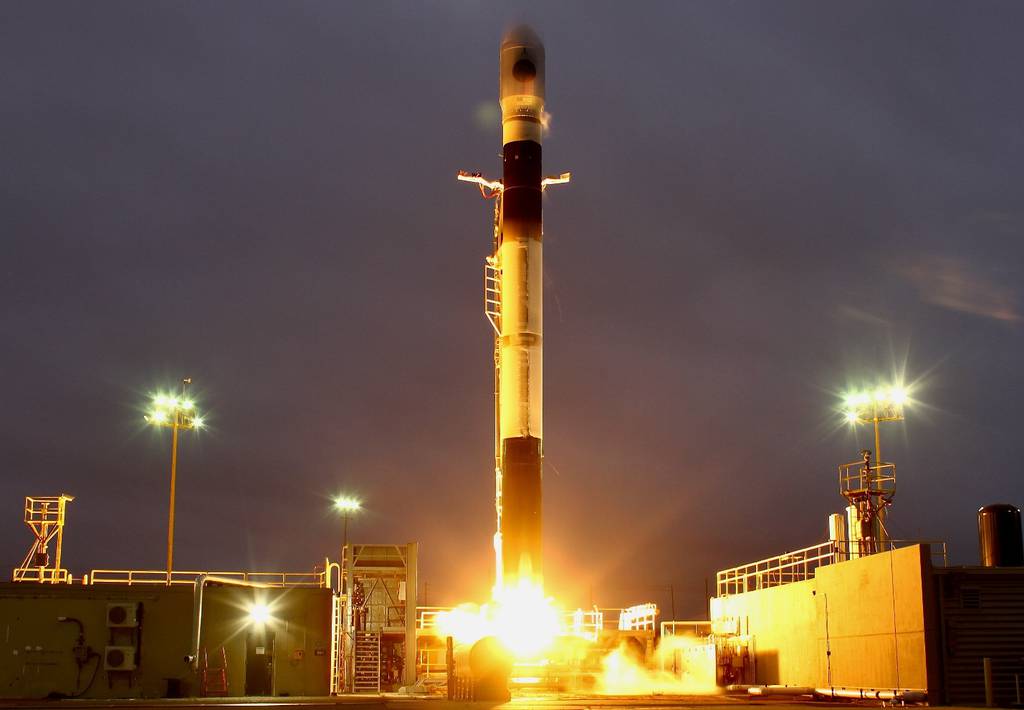Last September, the Space Force conducted a record-breaking demonstration showcasing its ability to buy, build, launch and operate a satellite on rapid timelines.
The Victus Nox mission — Latin for “conquer the night†— lifted off on Firefly Aerospace’s Alpha rocket within 27 hours of initial launch orders. It carried a Millennium Space Systems satellite that was delivered in a matter of months rather than the years it typically takes.
Following the launch, the spacecraft was ready for operations in just 37 hours — a phase that can stretch for weeks.
For its next demonstration, dubbed Victus Haze, the Space Force wants to achieve similar satellite delivery and launch timelines, but with a twist. This time, the spacecraft will be required showcase the ability to maneuver from a real-time threat.
The mission — named using a combination of Latin and English words to reflect its goal to demonstrate the ability to overcome the fog of war — is slated to launch in 2025, according to Lt. Col. MacKenzie Birchenough, senior materiel leader in the Space Force’s Space Safari Office. Her office, which leads these tactically responsive space efforts, was created in 2021 to respond to urgent operational needs.
Birchenough told C4ISRNET in an interview the Space Force has been on a “crawl, walk, run†trajectory toward establishing an enduring, operational, tactically responsive space capability. The goal of Victus Haze, she said, is to transition the Space Force to the “run†phase, helping prepare it to shift to operational missions by 2026.
“We feel like we’re really ready to move into that run phase of the approach,†she said. “And so, that’s where we’re taking Victus Haze.â€
Speaking Jan. 19 at a Center for Strategic and International Studies event in Washington, D.C., Vice Chief of Space Operations Gen. Michael Guetlein said Victus Haze aims to answer key questions about what training, policy and operational structures the service needs to put in place to operationalize these demonstrations.
“Victus Haze is about continuing to break those paradigms and to show how we would rapidly put up a space domain awareness capability and operate it in real time against a threat,†he said.
The Space Force defines tactically responsive space as the ability to react quickly to the threats that come from operating in an increasingly congested and adversarial space environment. That could mean launching satellites on short notice, maneuvering a pre-positioned, spare spacecraft to augment a degraded system or buying data from a commercial partner during a crisis.
“It’s about how we improve our acquisition processes and how we shorten our end-to-end timelines in everything that we do — from the contract awards to launch to on orbit checkout,†Birchenough said. “And then ultimately it’s about how we respond to on orbit needs or threats on tactically relevant timelines.â€
Expanding commercial partnerships
For Victus Haze, the service is working with the Defense Innovation Unit to help strengthen its partnerships with commercial companies. Birchenough said the team is in the final process of selecting companies to participate and hopes to announce details “in the near future.â€
Those awards will go to launch providers as well as companies with spacecraft that can maneuver in orbit — a departure from many of today’s satellites, which are designed to remain in a particular orbital position throughout their service life. The Space Force and U.S. Space Command have identified a growing need for satellites to be able to maneuver away from threats like debris or toward objects the U.S. may want to observe more closely.
In parallel to its work on Victus Haze, Space Systems Command is also partnering with the Space Force’s innovation arm, SpaceWERX, to broaden its vendor base and explore other responsive space concepts.
“It’s really important to us that we have multiple vendors that are able to do this type of mission where they have active production lines
Last month, Space Safari and SpaceWERX chose 19 companies to demonstrate new approaches to various tactically responsive space challenges.
Maj. Jason Altenhofen, director of operations for the Space Safari Office, told C4ISRNET in the same interview the goal of the SpaceWERX effort is to look beyond launch capabilities and consider other technologies that could support these missions.
“We realize that there’s a lot of opportunity for some of these companies that are developing these capabilities and there are some concepts out there that we’re pursuing to get after the threat that way,†he said.
Altenhofen noted that along with ensuring industry is ready to respond to urgent operational needs, the service is working to make sure it has the personnel and funding in place to enable these missions. Victus Nox, for example, brought to light the need for an operational structure to support tactically responsive space.
“There’s a lot of work going on right now on how do we resource this correctly and go beyond demonstrations to operations — not just from a capability standpoint, but from a resourcing and people standpoint as well,†he said.
Courtney Albon is C4ISRNET’s space and emerging technology reporter. She has covered the U.S. military since 2012, with a focus on the Air Force and Space Force. She has reported on some of the Defense Department’s most significant acquisition, budget and policy challenges.








